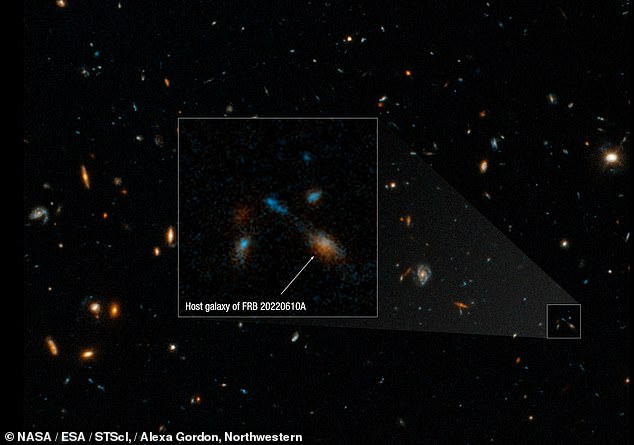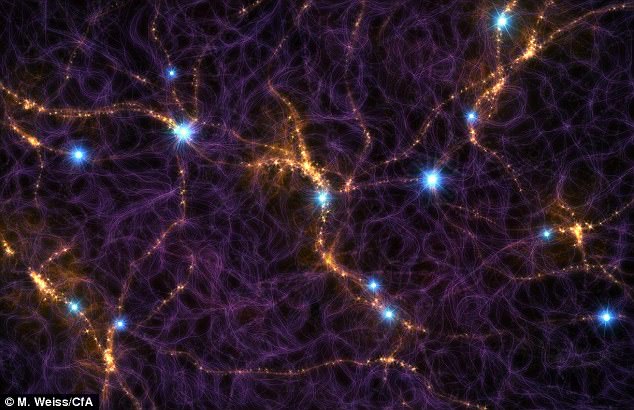Scientists have identified the “strange” origin of a burst of high-energy radio waves that traveled eight billion years through space before reaching Earth.
The signal, also known as a fast radio burst (FRB), is one of hundreds of fleeting bursts of energy detected over the years that some astronomers have speculated could be extraterrestrial life trying to contact our planet.
While scientists do not know the mechanism behind this extraordinary phenomenon, they have discovered that the FRB comes from a galaxy cluster that existed when the universe was only five billion years old.
Using NASA’s Hubble Telescope, the team examined deep space and took a clear image of the tightly packed galaxies.
New images from NASA’s Hubble Space Telescope have provided the clearest images yet of the host galaxy for an exceptionally powerful fast radio burst, FRB 20220610A. The sensitivity and sharpness of Hubble revealed that this distant galaxy is part of a ‘strange’ cluster of seven galaxies
The FRB, named FRB 20220610A, was found to be the most powerful and most distant ever detected when astronomers intercepted it in 2022.
However, researchers have since been left baffled about the origins of the energy burst.
Now the team has identified seven very compact galaxies as the home of the FRB.
“None have ever been seen in such a compact group,” according to astronomer Yuxin (Vic) Dong, who worked on the Northwestern University team studying the curious origins of FRB 20220610A.
“His birthplace is really weird,” he said.
alexa gordonwho led the new study at Northwestern, agreed, adding, “It’s these types of environments, these strange ones, that are pushing us to better understand the mystery of FRBs.”
These strangely bright flashes of light, recorded in the radio band of the electromagnetic spectrum, appear temporarily and randomly from space.
Possibly originating from black holes, neutron stars or even aliens, they range from a fraction of a millisecond to a few seconds before disappearing without a trace.
And the densely populated galaxies detected in the latest research would be easier for a growing extraterrestrial civilization to planet-hop. Astronomer Brian Lacki argued at Cambridge International Journal of Astrobiology.
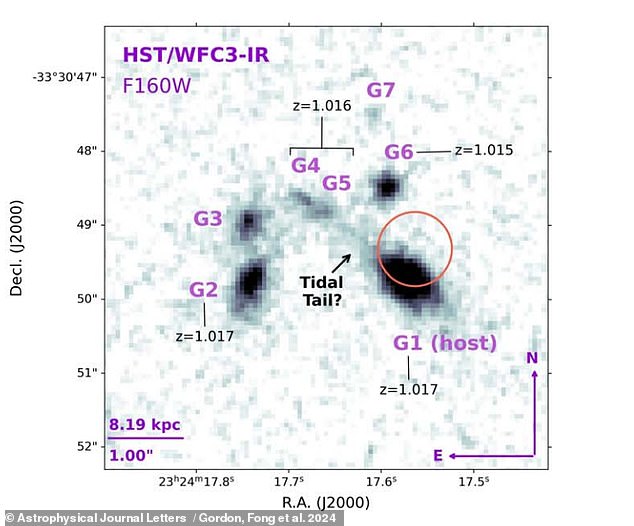
Astronomer Wen-fai Dong, who is studying FRB 20220610A, noted that the new Hubble images appear to show oblong shapes or “tidal tales” of some of these galaxies, suggesting they may have had collisions. These collisions may have created this rapid radio burst.
The origin of FRB 20220610A in a dense galaxy cluster would mean that any advanced extraterrestrials would have a dramatic advantage in setting up their own Search for Extraterrestrial Intelligence (SETI) radio.
SETI is a program that searches for radio waves and optical signals in the universe that could be signs of extraterrestrial technology.
But this dense galaxy cluster could instead one day demonstrate an alternative theory: that FRBs are produced by explosive collisions of neutron stars and other celestial bodies.
Before the Hubble images, which were released earlier this year, astrophysicists and astronomers were unclear whether the source of the explosion was a giant, amorphous galaxy or a collection of more modestly sized galaxies orbiting each other.
“Without the Hubble images, it would remain a mystery whether this FRB originated in a monolithic galaxy or some kind of interacting system,” as Gordon said in a nasa statement.
According to Gordon, collisions and other interactions between celestial bodies in these seven galaxies could trigger extreme star formations.
In other words, the chaotic activity in this active galaxy cluster could mean that this strangely powerful and distant FRB is energy released from the ignition of newborn stars.
Northwestern astronomer Wen-fai Fong, who also worked on the project, noted that the new Hubble images appear to show oblong shapes or “tidal tales” following some of these seven galaxies, suggesting they may have had collisions.
“There are some signs that group members are interacting,” Fong said.
“In other words, they could be exchanging materials or possibly on the way to merging.”
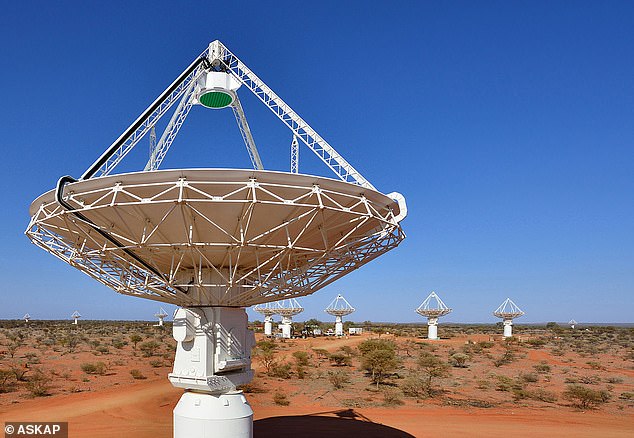
The discovery of this FRB 20220610A, the most distant and therefore oldest known, was made in June 2022 by the ASKAP radio telescope in Australia (above)
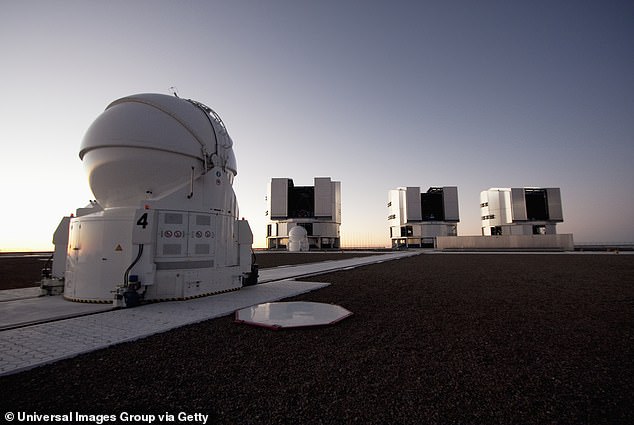
FRB 20220610A was confirmed with the help of the European Southern Observatory’s (ESO) Very Large Telescope (pictured)
The initial discovery of FRB 20220610A was made in June 2022 by the ASKAP radio telescope in Australia. It was later confirmed with the help of the Very Large Telescope (VLT) of the European Southern Observatory (ESO).
It broke the research team’s previous distance record by 50 percent.
“Using ASKAP’s array of antennas, we were able to determine precisely where the explosion came from,” said astronomer Dr. Stuart Ryder, an adjunct fellow at Macquarie University in Australia, whose team first identified the explosion in 2022.
Astronomers and astrophysicists hope that these types of distant FRBs (even if none of them turn out to be coded extraterrestrial messages) can help find hard-to-see traces of gaseous clouds and other matter hidden in the depths of space.
This concept originated with the late Australian astronomer Jean-Pierre (‘J-P’) Macquart in 2020, who proposed a method of using FRB to accurately measure missing matter in the universe.
“JP showed that the further away a fast radio burst is, the more diffuse gas it reveals between galaxies,” according to Ryder, “what is now known as ‘the Macquart relationship.'”
The Northwestern team is exploring this possible use of new data extracted from FRB 20220610A and also its strange, distant home galaxy.
“Radio waves, in particular, are sensitive to any material along the line of sight from the FRB location to us,” Fong said. “That means the waves have to travel through any cloud of material around the FRB site, through its host galaxy, through the universe and, finally, through the Milky Way.”
“From a delay in the FRB signal itself,” he said, “we can measure the sum of all these contributions.”

